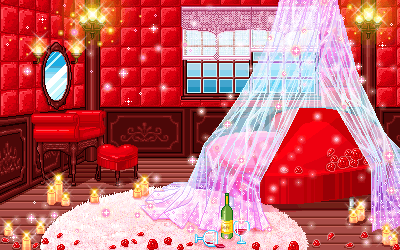 VALENTIMES
VALENTIMES 
One of the themes of the movie is the women's emancipation through art and sexuality. Why is it important to talk about this today?
Because I believe that love stories have a big influence on our lives. It's an ambition for every individual and all of our society to be in a couple, for example. It's very rare for people to decide to withdraw from that marketplace. So, love stories influence our lives, the way we see the world, and putting emancipation, rather than possession or living together forever or a tragic end, at the center of a philosophy of love I think offers a positive dynamic. I'm very interested in depicting other representations of love.

One of the most touching things about the film is how you deal with memory in a love story.
It's a bit the same dynamic: that a love that is lived is a love that's received. That's why often in love stories, it's necessary that relationships end so that we can bring them with us and not leave them in the theater. In the end, the frozen image of a couple walking towards the horizon doesn't leave us with much. So, it's the idea that what has been lived can be looked at and can nourish our future loves. I really believe in that, in memory as a dynamic.
As you leave a bad date or a disappointing encounter, you can't say to yourself, "My chances at finding love just got slimmer." Instead, tell yourself, "In a few years, you won't even remember these people. This is no big deal. It's going to suck in a million ways, and that's fine. It's just something you have to endure without taking it seriously."

I can tell that you believe in yourself. But do you believe in love? Because if you really believe in love, then fucking BELIEVE IN LOVE full stop. Don't say "I believe in love but I'm afraid it won't find me!" Don't repeat "WHY DO I HAVE TO GO THROUGH THIS?" until your torture becomes a religion. That is not believing in love.
The conservative appeal of traditional iconic bride-and-groom toppers is self-evident. These objects are often heavily invested in pictorializing Eurocentric, heteronormative ideals of marriage life. The figures stand with a stiff, straight, vertical posture and the rigid frontality of Byzantine emperors or ancient Egyptian monarchs. Some also bear a likeness in scale and material to cheap, mass-produced saints and divine beings. Early examples that continue throughout the 20th-century depict able-bodied, slender, gendered couples, with men standing taller than their wives. These duos are essential the "Platonic ideal" of American man-and-wife passed off as universal, as these stock figures were intended to appeal to any and all potential consumers. Each subsequent variation of the iconic, representative wedding cake topper points back to this traditional origin.

But symbolic and iconic wedding cake toppers alike do more than gesture to their historic associations, they also form a visual language that defines what marriage is and what a couple should be. Symbolic iterations define marriage in the abstract, while iconic versions convey what kinds of people occupy a place in the structure of marriage. The cake toppers may relate to an ongoing web of nostalgic and sentimental dreams of "the good old days," but they additionally signal the specific marriage and partnership of the individual couple in the moment of their marriage. In this sense, each cake topper, when activated - when chosen for use and then enfolded into a ceremony - performs as a marker of the couple in real time. For all the baggage each cake topper carries, they must also be more than these historic links in the current time of their use, as each ceremonial, celebratory context offers occasion for new associative readings to join and coalesce with their predecessors.
 Wedding Cake Toppers: Miniatures, Excess, and Fantasy, Mara Gladstone
Wedding Cake Toppers: Miniatures, Excess, and Fantasy, Mara Gladstone
I draw upon the crucial work of Jennifer Nash and her 2013 formulation of "black feminist love-politics," which she locates in the work of bell hooks, June Jordan, Alice Walker, and other luminaries. Rather than viewing love as an apolitical abstraction or feel-good cliche, Nash points out the many ways that Black feminists have theorized love as an ethic of justice, as a "practice of self...that forms the basis of political communities rooted in a radical ethic of care." This concept offers a refreshing contrast to more politically conservative understandings of love, discussed earlier in the essay, which promote a reactionary love-politics in service of the patriarch. This kind of politics weaponizes love as a tool of coercion, one that convinces Wives to abandon their support networks and even themselves in order to pledge total allegiance to Husband and Family.

Like Nash, Caleb Luna, and many others besides, I concur that the capital F family and romance - rather than providing the most direct routes to love - are in fact primary obstacles to love's flourishing. Because if love, as June Jordan once wrote, is "lifeforce," then I believe that a radical disability love-politics is that which makes life, connection and aliveness possible for those who live closest to death.
Against the Wife: Abolishing Romance and Family, Practicing Disability Love-Politics, Jina B. Kim
the one who cheated
the one who saved you
the one who cried the first time you did it
the one you'll always love

mansion apartment shack house, Kelsey Swintek and Evie Carreira
 You're flush with hearts and I'm forced to fold
You're flush with hearts and I'm forced to fold
this hand and swear off another luckless match.
How we've found ways to love each other, cajoled
our cindered hearts, flushed and forced to fold
upon themselves like Saint Valentine ensouled
with seizure, skin a whirring bee swarm, a hatched
flush of doves. My heart, how I'm forced to fold
my hands in prayer for another struck match.

I love you as the plant that doesn't bloom but carries
the light of those flowers, hidden, within itself,
and thanks to your love the tight aroma that arose
from the earth lives dimly in my body.
Putting your groceries in my trunk when another wasp crawls into that gap in my side mirror and this happens all the time: they go in headfirst and never back out, then they rattle around when I brake too hard. Two years ago I'd call it the Dead Wasp Graveyard, Dead Wasp Sepulcher, then all of the sudden I loved you and it was a Dead Wasp Rave, Dead Wasp Orgy, Dead Wasp Shaken-Cocktail Bar, the sound became not their bones breaking but their bodies! dancing! fucking! knocking against the ice in their glasses! You shake us something with mezcal and I take a long sip of the blurry up-and-down of your arm in the kitchen window light. This golden heat. Your papery tee shirt wings. I could crawl in the gap between your collar and your throat and buzz or something. You could crawl in too and we'd know, then, as if we don't know already. What the wasps are up to.




Background pattern by @uchihaclan on CodePen. Decorations from Bonnibel's Graphic Collection, Cinni, and Shishka.